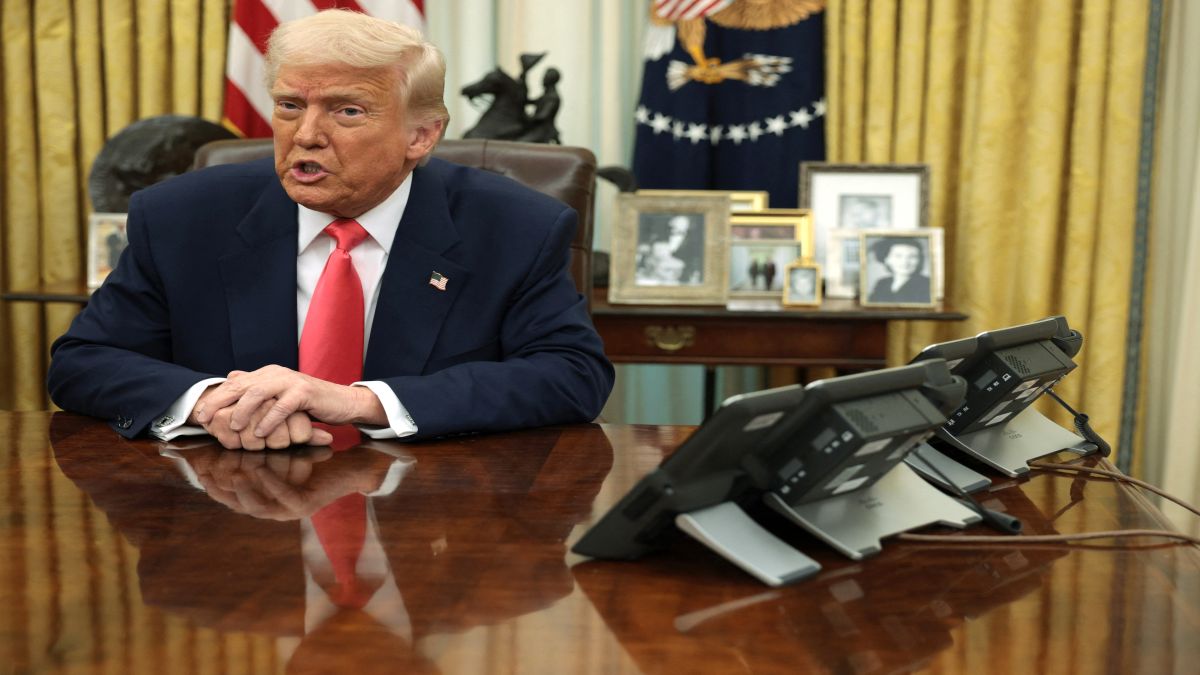In a few hours from now, Donald Trump is expected to roll out his ‘Liberation Day’ tariffs from the White House’s Rose Garden at 4:00 pm local time (1.30 am IST). While Trump has long insisted on reciprocal tariffs, the White House admitted that he was still ironing out the details with less than 24 hours to go.
Countries across the globe, including India, are now waiting with bated breath for Trump to make his tariff plan known and analyse how it will impact them. They are even more anxious as White House press secretary Karoline Leavitt on Tuesday announced that what Trump ultimately decides will be “effective immediately”.
But what exactly is India’s plan for Trump’s tariffs? How is the government planning for this big day?
Trump’s ‘Liberation Day’ tariffs
According to Trump, his reciprocal tariffs will be America’s ‘Liberation Day’ as it will free the country from foreign goods. In the US president’s mind, the country has long been “ripped off” by countries with higher tariff rates on US-made products and this is the way to tip the scales back in his favour.
“This is the beginning of Liberation Day in America,” Trump has said in the past. “We’re going to charge countries for doing business in our country and taking our jobs, taking our wealth, taking a lot of things that they’ve been taking over the years. They’ve taken so much out of our country, friend and foe. And, frankly, friend has been oftentimes much worse than foe.”
However, it is still unknown how high the tariffs could go and how they would be imposed. Moreover, we still don’t know who shall be hit by the levies. However, Trump has said that it would apply to all countries and not just a few. “You would start with all countries, so let’s see what happens,” he said earlier.
Most trade experts note that India, Brazil, Vietnam, and other Southeast Asian and African countries will be hit hard by Trump’s tariffs. However, a CNN report notes that many countries in the European Union also have VATs and DSTs, making one of America’s largest trading partners a likely target for higher tariffs.
India braces for L-Day
As Trump and his team ready their plan, Indian exporters are bracing themselves for a wave of reciprocal tariffs that could rattle key export sectors and send the Indian stock market into deeper turmoil.
According to the think tank Global Trade Research Initiative (GTRI), if Trump was to levy a uniform tariff, it would leave India facing an additional tax of 4.9 per cent compared to the current 2.8 per cent, impacting sectors like agriculture, electronics, and pharmaceuticals.
“If the US imposes a single tariff on all products from India, it would be an additional 4.9 per cent. Currently, US goods face a weighted average tariff of 7.7 per cent in India, while Indian exports to the US face only 2.8 per cent, leading to a 4.9 per cent difference,” said the GTRI report.
However, if the US implements separate tariffs, the impact will be sector-wise. Sectors like petroleum, minerals, and garments may be the least impacted. Trump’s tariffs would pose the biggest risk to the agriculture sector — tariffs on shrimp, dairy, and processed food could go up to 28.2 per cent, and pharma and jewellery industries by over 10 per cent. The electronics industry could face up to 7.2 per cent, the report said.
India’s many plans for Trump tariffs
So, what are India’s plans for the big moment? For now, it’s playing the wait-and-watch game, with officials saying that the government will evaluate the actual impact before formulating its response — a measured stance compared to the more reactive approaches of other major economies.
A Hindustan Times report said that they have mapped out four possible scenarios and their potential implications for Indian trade. In a product-specific scenario, Chinese, Mexican, Canadian and EU exports would likely be most affected, potentially making Indian exports more competitive. Sector-specific measures would impact all global players, including India by increasing costs and reducing margins. And both country-specific and secondary tariff scenarios would adversely affect India’s economy.
Minister of State for Commerce and Industry Jitin Prasada also said in the Lok Sabha on Tuesday (April 1) that India’s tariff policy aims to regulate trade, protect domestic industries and generate revenue through taxes on imported and exported goods. “Recent reforms have focused on streamlining the tariff structure and facilitating trade,” he said.
Furthermore, Indian Express reported that New Delhi has agreed upon the terms of reference (ToR) for a bilateral trade deal with the US. With this, the two nations are now ready to negotiate formally for a deal, which will see India cutting tariffs on American goods drastically, reported the Indian daily.
Meanwhile, on Monday, Trump also said that India plans to significantly lower its tariffs before the April 2 deadline for reciprocal tariffs. “India is going to be dropping its tariffs substantially,” Trump said.
During a press briefing in the Oval Office, Trump said, “I think a lot of them (countries) will drop their tariffs because, you know, they have been unfairly tariffing the United States for years. And if you look at the European Union on cars, they already dropped their tariff down to 2.5 per cent…”
He further added, “I think I heard that India, just a little while ago, is going to be dropping its tariffs very substantially. And I said why didn’t somebody do this a long time ago. A lot of countries are going to be dropping their tariffs.”
Possible silver lining for India
However, even as India braces for the worst, some experts observe that Trump’s ‘Liberation Day’ tariffs have some benefits for the nation. They argue that additional levies on goods from countries like Canada would create new opportunities for Indian exports.
GTRI founder Ajay Srivastava stated that US tariffs threatened to turn Canadian products more competitive allowing Indian companies to source such products from Canada at lower costs. This came with two benefits: strengthened trade ties and a cut in dependence on other suppliers.
Moreover, Trump’s tariffs aren’t for India alone. In fact, the impact of these tariffs on countries like China will be far higher. This, as Chethan Shenoy, director and head - product & research, Anand Rathi Wealth, told Economic Times, would be beneficial to India. “This could create opportunities for India by potentially increasing its export numbers, as any tariffs imposed would likely be lower than those on China, giving India a competitive advantage.”
With inputs from agencies


)
)
)
)
)
)
)
)
)



